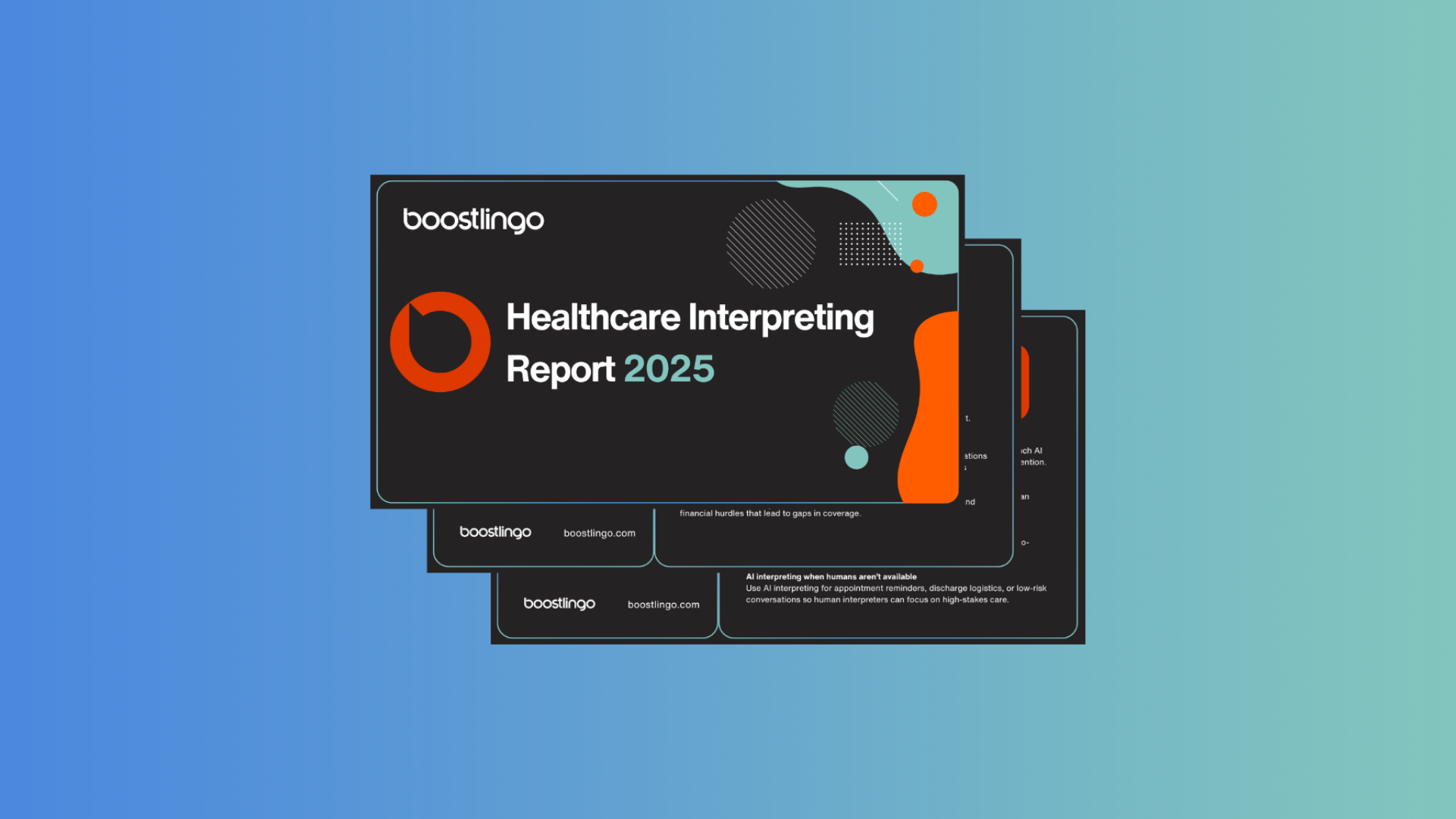I like to tell my team that the work we do at Boostlingo isn’t life-and-death. I’ve worked in life-and-death as a transplant nurse.
But the work we do in building technology to support medical interpreting does enable the entire care team who often are working in life-and-death situations.
Language barriers pose a major challenge when it comes to accessing health care. Limited English proficiency (LEP) patients often struggle to make appointments—let alone describe symptoms or understand recommendations.
Medical interpreters can help, but healthcare professionals don’t always provide one due to the cost. And in some cases, poor connectivity and subpar remote interpreting technology at hospitals render this crucial service ineffective.
Ultimately, failure to provide language access can result in serious medical mistakes.
In this blog post, I take a look at three medical malpractice cases and how errors like these can be avoided in the future.
The Willie Ramirez Case
The Willie Ramirez case is often referred to as the most expensive medical interpreting error of the twentieth century. The failure to understand one word changed the life of Willie Ramirez.
In 1980, the 18-year-old arrived at a South Florida hospital in a comatose state. His Spanish-speaking mother explained that he was “intoxicado”—which meant suffering from food poisoning.
Doctors mistakenly believed that meant he overdosed on drugs or alcohol.
But Willie had actually suffered from a brain hemorrhage and was left quadriplegic as a result. Had a neurosurgeon been called immediately, he could have avoided this fate.
Language access is a civil right under Title VI, and the hospital serving Willie violated his right and permanently injured him. He won a $71 million settlement as a result.
The Willie Ramirez case highlights just one reason why family members don’t make the best interpreters. Had a medical interpreter been present to help communicate, Willie’s story could have ended with the proper diagnosis and treatment.
The Tran Family Case
A nine-year-old girl in California arrived at a hospital with what seemed to be a serious case of the stomach flu. Her parents only spoke Vietnamese, yet the hospital didn’t use an interpreter.
Instead, the girl and her 16-year-old brother tried to interpret for hospital staff.
The doctor sent the family home with a prescription and important instructions to return to the hospital in the case of certain side effects, all in English.
The girl later had a reaction to the drug and died of a heart attack. The doctor and the hospital ended up settling the malpractice claim for $200,000.
Children shouldn’t be tasked with medical interpreting—especially for their parents. Interpreting in high-stress situations can cause emotional turmoil for professionally trained adults who’ve done strenuous research on medical terminology. Expecting young children to provide interpretation in place of a medical interpreter is a failure in many ways.
In this situation, a medical interpreter would have been able to effectively communicate potentially lifesaving instructions between doctor and parents.
The Teresa Tarry Case
As a British citizen living in Spain, Teresa Tarry underwent an unnecessary double mastectomy because of a translation error in her medical records.
A doctor found a benign lump during an exam and believed that Teresa had a family history of breast cancer as result of the translation. While the translation error was made before Teresa’s care, the hospital compounded the mistake by not providing a medical interpreter during her stay.
Teresa understood that she was having the operation because she had cancer. The misunderstanding led to the unnecessary surgery.
Teresa, who doesn’t speak Spanish fluently, claimed she was never offered an interpreter. She sued the hospital for €600,000 during an eight-year long compensation battle.
This case shows that even patients who speak the language may need assistance. As someone who worked in the medical field for years, even in English, there is a difference between being conversationally fluent and medically fluent.
An interpreter could have helped clarify Teresa’s family medical history, and she would have avoided unnecessary surgery.
Common Theme
Language barriers pose a major challenge to the accessibility of good medical care.
Combined with the stress of being unwell, most LEP patients are unable to convey critical information about their symptoms and experience. Under these circumstances, doctors may struggle to deliver proper care.
The availability of language services in healthcare helps eliminate mistakes and increases confidence in Limited English proficiency patients who seek out care.
That’s why I believe that by ensuring LEP patients have access to interpreters, providers are better able to meet needs and provide excellent care. That’s why we see at the highest level, language access plans not only improve health outcomes but increase ratings and funding for those who provide them.
Connecting with a Remote Interpreter
Of course, an onsite interpreter isn’t always an option.
Fortunately, over-the-phone (OPI) and video remote interpreting (VRI) make it possible to connect with one almost anywhere. And here’s where Boostlingo comes in. Our easy-to-use, HIPAA-compliant platform lets you quickly connect with interpreters in over 300 languages!
It’s a fast, affordable alternative to onsite interpreting. We also provide an interpretation management solution.
Want to learn more about how Boostlingo can improve your practice? Contact us today to start your free trial!



